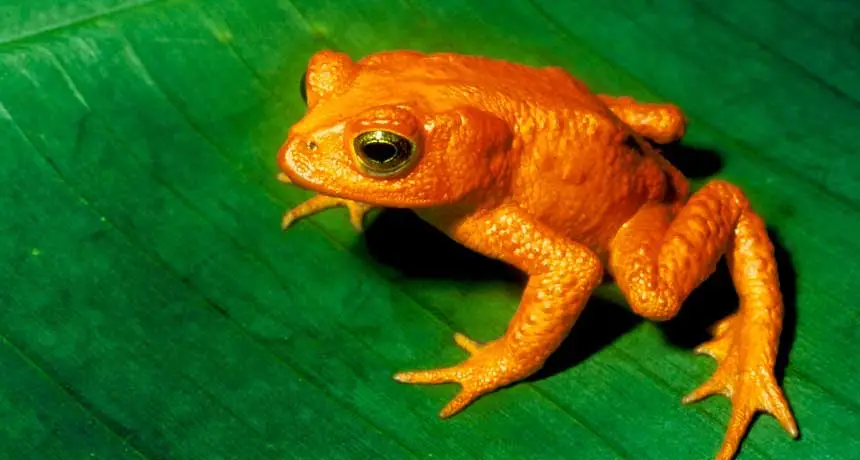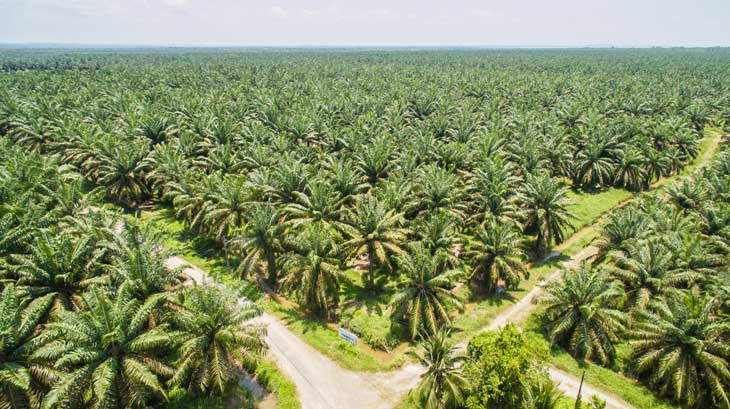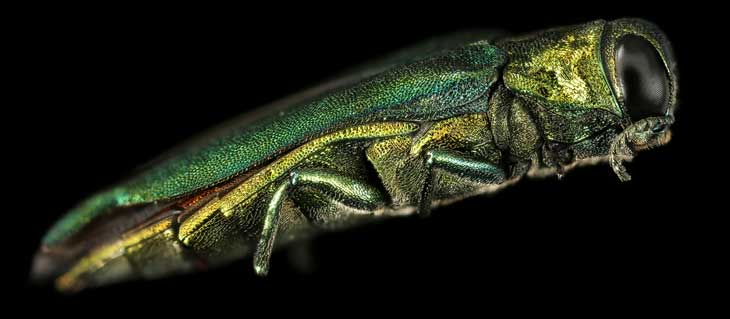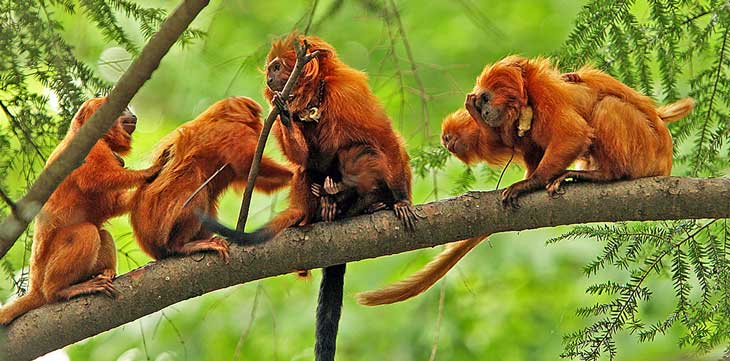1 million species are under threat. Here are 5 ways we speed up extinctions
A report that analyzed 15,000 studies conducted in the last 50 years presents a stark view

GONE GOLD The last recorded sighting of the golden toad Incilius periglenes, once abundant in the cloud forests of Central America, was on May 15, 1989.
Papa Lima Whiskey/Wikimedia Commons
- More than 2 years ago
Stories about individual species on the brink of extinction may be all too familiar. But a new tally now reveals the breadth of the conservation crisis: One million of the world’s species are now poised to vanish, some as soon as within the next few decades.
That number, which amounts to 1 in every 8 animal or plant species on Earth, comes from a sweeping new analysis of about 15,000 studies conducted within the last 50 years on topics ranging from biodiversity to climate to the health of ecosystems. During that time, the human population has doubled, increasing from 3.7 billion in 1970 to 7.6 billion today. And people are behind the looming losses, an international group of scientists says.
Thanks to human activities, the rate of global species extinctions is tens to hundreds of times faster than the average extinction rate was over the last 10 million years, the Intergovernmental Science-Policy Platform on Biodiversity and Ecosystem Services, or IPBES, concludes in a summary of the study published May 6. The intergovernmental group, which has 132 nations as members including the United States, will release its full 1,500-page report in about six months.
The report contains many other sobering numbers: More than 40 percent of amphibian species are threatened, along with 33 percent of marine mammals, 33 percent of sharks and reef-building corals and 10 percent of insects. Right now, the rate of global species extinctions is tens to hundreds of times faster than the average extinction rate was over the last 10 million years. And if human activities continue unabated, the rate of extinctions will continue to accelerate, the report states.
Here are the top five ways that people are speeding up the losses:
1. Leaving species fewer places to live on land
The top threat to species on land due to humans is habitat loss, the report says. About 75 percent of land on Earth has been “severely altered” by human actions. Since 1992, urban areas have grown by more than 100 percent. Elsewhere, agriculture to feed the world’s growing population has taken over many once-diverse habitats such as old-growth forests, wetlands and grasslands.

The report notes that 85 percent of wetlands that were present in 1700 were lost by 2000, and that forests now cover just 68 percent of the area they covered in preindustrial times. What’s more, the production of food crops is up by 300 percent since 1970, and in the world’s tropical regions, agricultural lands expanded by 100 million hectares from 1980 to 2000. In Southeast Asia, palm oil plantations have edged out once-intact forests, while in Central America, cattle ranches have expanded into forested areas (SN Online: 9/13/18).
2. Overfishing the oceans
Habitat loss is a problem in the oceans, too — about 66 percent of the ocean surface area has been altered by human actions, the report finds. But the top threat to marine creatures from people is overexploitation. Industrial fishing spans more than 55 percent of the ocean’s surface area, and about 33 percent of the ocean’s fish stocks are being harvested at unsustainable levels.
Among the world’s most overfished species are Atlantic halibut, bluefin tuna and all types of sharks. Other species, such as dolphins and loggerhead turtles, suffer as bycatch when they are inadvertently trapped during fishing activities.
3. Not tackling climate change fast enough
The world has already warmed by an average of about 1 degree Celsius since preindustrial times (SN: 12/22/18, p. 18). That warming is linked to the frequency and intensity of extreme weather events such as floods, fires and droughts, as well as to rising seas and to shifts in where species are distributed around the globe (SN: 1/19/19, p. 7). And warmer ocean waters are also placing stress on many fish populations, reducing the amount of fish that can be caught sustainably, without doing long-term damage to populations (SN: 3/30/19, p. 5).
Land-use changes are also tied to climate change: Land clearing, crop production and the use of fertilizers currently account for about 25 percent of the world’s greenhouse gas emissions. Three-quarters of those emissions come from animal-based foods (SN: 7/7/18, p. 10). And as a result of decreasing diversity, some tropical forests are contributing more carbon dioxide to the atmosphere than they are absorbing (SN: 10/28/17, p. 9).
4. Continuing to pollute the environment
Among the worst recent offenders is marine plastic pollution, which has increased tenfold since 1980 and affects at least 267 species, including 86 percent of marine turtles, 44 percent of seabirds and 43 percent of marine mammals, the report states (SN Online: 3/22/18).
Plastics, particularly microplastics, can find their way into soils, too (SN: 5/12/18, p. 14). And other kinds of pollution are still a problem, including untreated urban and rural waste, mining and agricultural waste and oil spills (SN: 3/17/18, p. 5).

5. Paving the way for invaders
Thanks to global trade and travel, humans have introduced invasive species to vulnerable areas around the world: Across 21 countries with the most detailed records, the number of invasive species per country has increased by about 70 percent since 1970, the report finds. Those invaders not only compete with native species for water and other resources, but also — like the frog-killing chytrid fungus Batrachochytrium dendrobatidis (SN: 4/27/19, p. 5) or the tree-munching emerald ash borer — can wipe out vast numbers of native animals or plants.
But there’s hope …
Humans can still slow the loss of species, the researchers note. Conservation investments from 1996 to 2008 have already reduced the extinction risk for mammals and birds in 109 countries by 29 percent. But saving more species will require “transformative changes” in behavior, the report states, including how people consume energy, food and water, and how they use land and technology.







